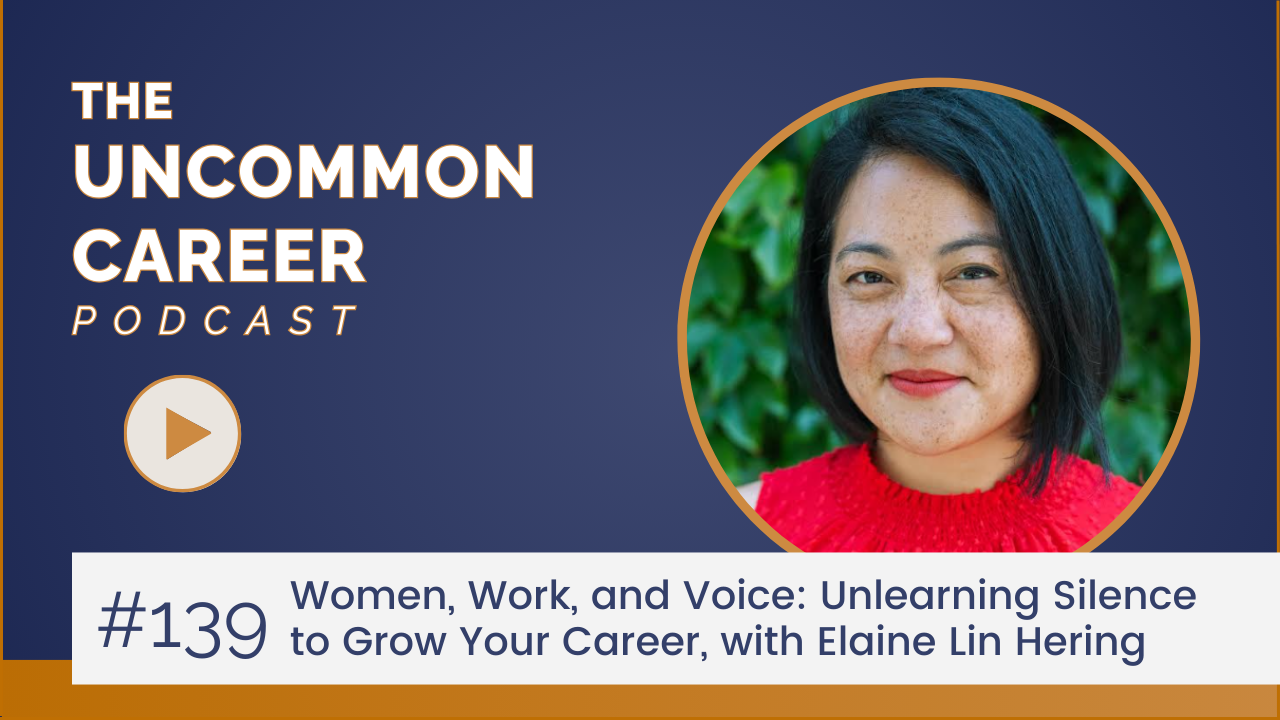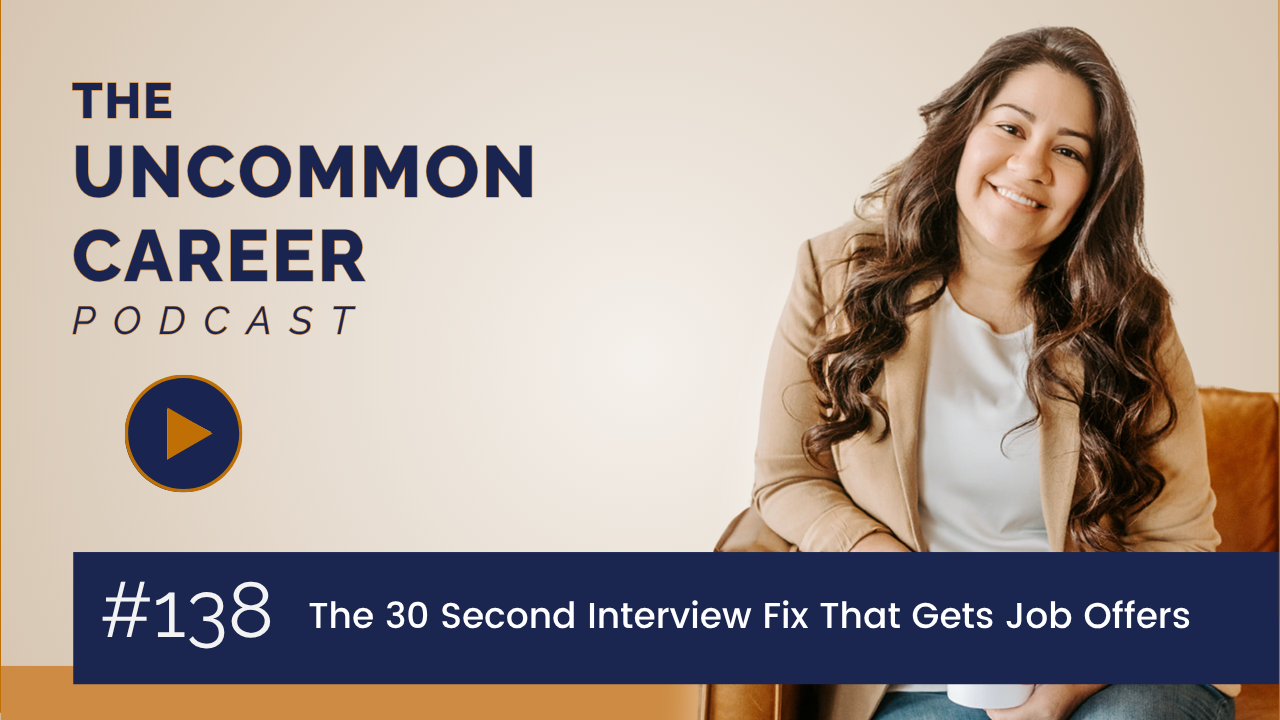134. Why Networking Beats Applications - And How to Get Started
Oct 21, 2025
Stop Shouting into Portals: How Networking Actually Lands Offers
Endless online applications drain time, energy, and hope—often with silence in return.
Networking flips the script. Instead of front-loading hours into forms and hoping a stranger notices, invest minutes in real conversations that build a bridge between past work and a team’s current needs. Networking isn’t selling; it’s connecting with future colleagues, translating value into their language, and letting mutual curiosity drive the next step.
The goal is simple: start small, keep it human, and let genuine interest—not a perfect pitch—open doors.
|
Listen on your favorite podcast app: |
| |
Why Networking Beats Applications (and When Portals Still Matter)
Most teams still require an application for compliance, yet decisions often crystalize well before a recruiter touches a requisition. Hiring managers compare real humans, not keyword scores; they ask “who understands the problem and can work with this team?” Networking makes that understanding visible.
It translates a resume from static claims into observed presence: how questions are asked, how ambiguity is handled, how priorities are weighed.
This is why conversations accelerate outcomes while blind applications stall.
-
Applications are receipts; conversations create evidence. The former records interest, the latter demonstrates fit.
-
Internal candidates don’t always win. External voices with fresh perspective and strong fit can outpace them.
-
Use both channels. Network to create context, then submit the application the system requires.
Portals are front-loaded effort with low signal. Networking spreads effort over time as interest grows.
-
Hiring decisions are relationship-heavy. Many roles go to referrals, networking, or internal candidates—context and trust matter.
-
No sales mode needed. Treat outreach as a colleague-to-colleague conversation about shared work.
Rethink “Cold Outreach”: Make It Warm Before You Hit Send
“Cold” only describes how unexpected the message is to the recipient; it doesn’t mandate a cold tone. Outreach becomes warm when research precedes contact—shared industry, overlapping topics, or a recent talk, article, or project. A short, specific note signals respect and relevance, not spam.
The litmus test: if the message could be sent to anyone, it shouldn’t be sent to anyone.
-
Personalize for one detail that matters: a product launch, a blog post, a panel takeaway.
-
State a clear purpose: learn about a function, understand a roadmap, sense-check a skill gap.
-
Offer a small ask: 15 minutes or a few written pointers—make the “yes” easy.
The Hidden Tripwires: Hesitation, Overanalysis, and Overexplaining
Networking rarely fails for lack of intelligence; it falters under the weight of hesitation and overthinking. Three patterns derail momentum:
-
Hesitation leaks into the message. If outreach feels awkward, the phrasing often reads awkward—apologies, qualifiers, and long prefaces. Confidence isn’t loud; it’s clean.
-
Overanalysis slows the start. Hunting for the single perfect person or company wastes days. Aim first for “near the problem,” not “exact hiring manager.” Conversations in the vicinity create introductions to the decision-makers.
-
Overexplaining buries the ask. Piling context about the entire job search reads like a confession, not a question. Keep it short; let curiosity and follow-ups expand the thread naturally.
Don’t Answer Your Own Question
One subtle habit sabotages responses: asking for time, then immediately excusing the other person from responding. “Would a 15-minute chat work? If not, totally get it, no worries…”
Yes, this looks polite but functions as a preemptive “no.” Ask clearly and let the recipient decide.
-
Pose one clear question. No pre-emptive outs; trust adults to manage calendars.
-
Offer two windows or an async option. Specificity increases replies: two time slots or “happy to read 3 pointers via DM/email.”
Did You Know? Your Inner Narrator Is Louder Than You Think
Emotions ride along in punctuation and word choice. Anxiety can turn direct questions into tangled paragraphs. The fix isn’t to fake confidence; it’s to right-size the ask. When the request is genuinely small and specific, language naturally tightens.
Clarity creates calm, and calm earns replies.
-
Shrink the step. Ask for perspective, not a referral. Request a reality check on one skill, not a full portfolio review.
-
Name a shared context. Same conference, mutual connection, overlapping problem space—establish a bridge in one line.
And what else should you say? Take note that networking works best when messages sound like colleagues trading notes:
-
Personal relevance. One sentence referencing their work, talk, article, or product.
-
Why you’re reaching out. A single purpose tied to their domain (e.g., understanding how X team evaluates Y skill).
-
Small ask with options. Two time windows or an async option.
-
Gratitude and exit. A simple thank-you; no over-promising or life story.
Examples of crisp phrases that lower friction and keep tone warm:
-
“Your post on [topic] clarified how [team] frames [problem]. Curious how the team evaluates [specific skill] for [role]. Open to a 15-minute chat next Tue/Thu, or 3 pointers by DM if easier?”
-
“Enjoyed the panel on [topic]. Two-minute question: which metrics matter most in early quarters for [function] on your team?”
-
“Exploring roles adjacent to [product/initiative]. Would perspective on day-to-day tradeoffs be possible? Happy to keep it to 10–15 minutes.”
Choose People “Near the Problem,” Not Just the Title
Targeting only the hiring manager narrows the funnel to a single doorway.
Teams operate as networks: peers, cross-functional partners, former team members, and community contributors all offer legitimate insight and warm paths. People “near the problem” can answer better questions—and often introduce directly when the fit feels real.
-
Start with adjacency. Engineers near the platform, PMs near the roadmap, ops partners who handle the outcomes—all are valuable.
-
Follow the edges. A short exchange with a peer can lead to the right director faster than a cold message to that director.
Keep the First Conversation Light and Useful
A great first call isn’t a stealth interview.
It’s a curiosity-forward chat that leaves both sides better informed. Share concise context, ask targeted questions, and listen for the realities that job descriptions don’t capture: tradeoffs, constraints, tools, and success signals. The unspoken goal is to be easy to talk to and specific about value.
-
Bring three questions, not twenty. Prioritize: team priorities, success metrics, early-quarter wins.
-
Offer one relevant insight. A brief, grounded perspective demonstrates how thinking maps to their world.
-
Leave room for them. The more they talk, the more context emerges—and the more they invest.
Follow-Up That Feels Natural, Not Needy
Don't forget—after a helpful exchange, send a short thank-you that captures one takeaway and one next step. If a resource was mentioned, share it. If a warm intro was offered, confirm details in a single line. If nothing immediate surfaced, keep the door open with a simple closing note and continue exploring adjacent contacts.
-
One-paragraph follow-up: gratitude, a specific takeaway, and a clear next step.
-
Set a light touch cadence: a relevant article, a brief update, or a new question weeks later—relationship, not pressure.
Pitfalls That Quietly Stall Momentum
A few habits make networking harder than it needs to be:
-
Generic templates. Anything that screams “mail merge” dies on arrival. Customize or don’t send.
-
Life-story dumps. Excess detail turns focus away from the ask; short beats sympathetic.
-
Calendar commandeering. Demanding urgency or insisting on long blocks signals low regard for others’ constraints. Keep asks small.
-
Self-disqualification. Avoid writing “if not, totally fine” into every line. Ask and pause.
Build Momentum by Sequencing, Not Forcing
Networking compounds when steps are sequenced: a personalized message prompts a short chat; the chat reveals a problem; a brief follow-up shares a resource tied to that problem; a later conversation explores a role. Each step invites the next because value is exchanged at every stop.
Forcing an outcome early (e.g., “can you refer me?”) risks derailing trust. Let alignment invite the referral; let the relationship carry the request.
-
Exchange value every time: a question sharpened by research, a pointer that saves them 10 minutes, a succinct summary of the problem space.
-
Let interest scale effort: as they invest more, invest more. Keep the early steps light.
What if they don't respond?
Silence isn’t indictment; it’s bandwidth.
Many professionals ignore messages they’d happily accept on a calmer week. When the ask is small and the tone is human, follow-ups can be equally human: a brief nudge with an alternate option or a thanks-and-move-on if two notes go unanswered. Protect energy by measuring progress in conversations, not only outcomes.
-
Two tries, then release. New conversations elsewhere keep momentum (and optimism) alive.
-
Detach from “win or lose.” Each exchange sharpens market understanding and language for the next.
Your Networking Voice in One Page
Boil outreach down to a one-page reference sheet so action stays simple:
-
Who to reach: roles near the problem, peers + cross-functional neighbors, community contributors.
-
What to say: a specific compliment or observation → one purpose → small ask with two options.
-
How to follow up: one insight captured → one next step offered → gratitude.
-
What to avoid: generic scripts, long justifications, preemptive apologies, calendar overreach.
Networking isn’t a personality test; it’s a professional habit of starting useful conversations with people close to the work. Replace blind applications with targeted outreach that respects time, shows curiosity, and scales effort as interest grows.
Keep messages short and specific, choose people near the problem, and let each step invite the next.
Doors open faster when value is demonstrated in real time—and when the ask is simple enough to say “yes” to today.













